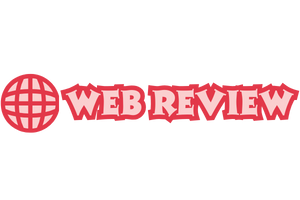In the year 2025, the most effective SEO strategies no longer begin with keywords; they commence with comprehending what users truly desire.
Many businesses still treat SEO as a checklist: select a keyword, compose a blog, hope for traffic. However, as search engines become more advanced, that method is proving less effective. Now, merely appearing on the first page is insufficient; understanding and matching the user’s search intent is essential for converting rankings into tangible business results.
Search intent is no longer just a niche SEO concept; it is the cornerstone of modern organic growth and a significant reason why on-page SEO holds more importance than ever before.
Why Search Intent Is More Crucial Than Ever
Search intent refers to the “why” behind a search query. Is the user seeking to learn something, compare options, or make a purchase?
- Consider the differences between the following search queries:
- “What is CRM software?” (informational)
- “Best CRM tools for small businesses” (commercial investigation)
- “Buy Salesforce subscription” (transactional)
While they are related, they differ greatly in urgency, expectations, and the suitability of the page. If your content does not align with the user’s intent, the quality of your keywords becomes irrelevant—you lose the user.
Google’s Algorithm Is Now Intent-Aware
The focus on intent is intentional. For years, Google has refined its grasp of context, nuance, and purpose. Through updates like BERT and MUM, and the Helpful Content enhancements, the objective is clear: to deliver results that fulfil the user’s true intentions, not just their phrasing.
This evolution rewards brands that optimise not just for keywords but also for intent by structuring their pages, content, and metadata accordingly. Strong on-page SEO bridges the gap between user expectations and search engine logic.

Understanding the Four Main Types of Search Intent
Every keyword can be categorised into one of four intent types:
- Informational – “How does local SEO work?”
- Navigational – “Moz blog”
- Commercial – “Best SEO tools 2025”
- Transactional – “Buy SEO audit service”
Effective SEO strategies recognise these categories and align content types accordingly. Informational searches require guides and explainers, commercial searches need comparison pages, and transactional searches call for CTAs, product information, and trust indicators.
When your page format does not match the intent, bounce rates increase and conversions drop.
How On-Page SEO Supports an Intent-Driven Strategy
At its heart, on-page SEO aims to provide both search engines and users with exactly what they require—quickly, clearly, and confidently. This includes:
- Headings and subheadings that reflect the query’s structure
- Internal linking that supports the next steps in the user’s journey
- Page layouts tailored for research, comparison, or conversion
- Schema markup to reinforce the content’s purpose
- Optimised metadata that aligns with SERP expectations
High-volume keywords only perform effectively when supported by an on-page structure that aligns with intent, which is why technical and content elements must work in harmony.
Common Mistakes: Prioritising Keywords Over People
Even savvy brands can fall into these traps:
- Using blog posts to target transactional queries (e.g., attempting to sell from an explainer)
- Targeting too many intent types on one page (which confuses both users and algorithms)
- Neglecting to map content to funnel stages (not every visitor is ready to convert immediately)
- Overemphasising volume over relevance (which increases traffic but not results)
Intent-focused SEO addresses these issues by ensuring every page has a clear purpose that aligns with the user’s needs.
The Role of Content in Intent-Driven Optimisation
To effectively support search intent, content must:
- Answer questions promptly
- Anticipate follow-up inquiries
- Provide useful next steps
- Be organised for easy scanning and clarity
Today, it’s insufficient to merely write well; content must also be well-structured. SERP snippets, featured answers, and semantic headings all contribute. For ranking in voice or AI-assisted searches, intent alignment becomes even more crucial.
Real-World Impact:
Enhanced Engagement, Better Conversions Aligning on-page SEO with user intent unlocks:
- Lower bounce rates
- Increased time on page
- Stronger internal navigation
- More qualified leads
- Improved organic conversions
It’s advantageous for both users and businesses: users find what they need, and businesses benefit from smoother journeys and more meaningful metrics.
Final Thoughts
In a landscape where anyone can produce content, relevance is key. Search intent is no longer optional—it is essential for effective SEO.
Keyword research remains important, but only when paired with intelligent, structured on-page execution. Businesses focusing on intent rather than mere impressions will enjoy better rankings, better leads, and superior results.
If you’re prepared to transition from reactive to strategic SEO, Terrier assists brands in constructing content and technical foundations that align with user needs.




